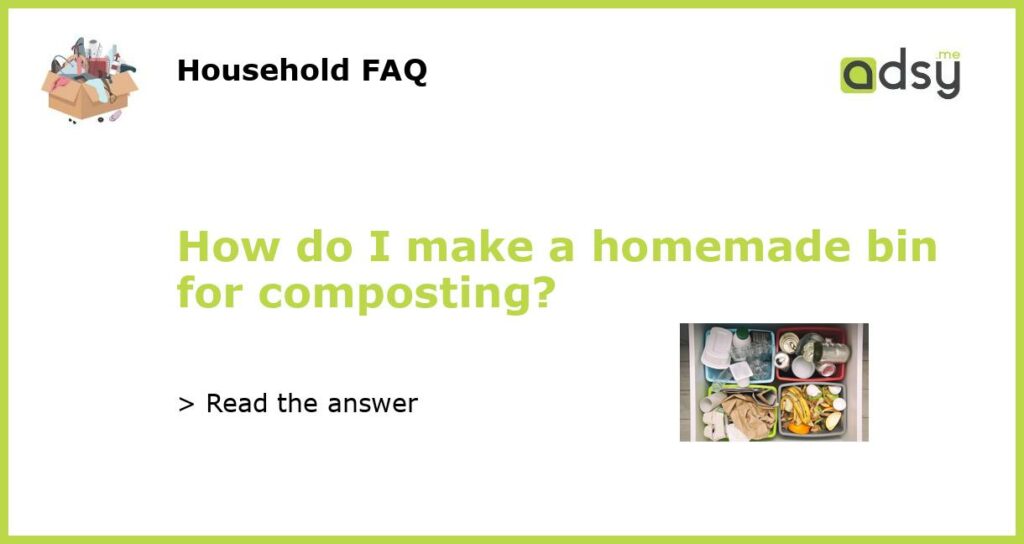Benefits of Composting at Home
Composting at home is a great way to reduce waste, create nutrient-rich soil, and contribute to a sustainable environment. By turning organic waste into compost, you can divert a significant amount of waste from landfills and reduce greenhouse gas emissions. Compost can be used to enrich your garden soil, improve plant growth, and reduce the need for chemical fertilizers. Making a homemade bin for composting is a simple and cost-effective way to start composting at home.
Choose the Right Location
When setting up your homemade composting bin, the location is important. Choose a spot that is convenient for you to access while also ensuring proper airflow and drainage. The ideal location is a shady spot, away from direct sunlight and strong winds. This will help maintain the moisture level in your compost pile and prevent it from drying out too quickly.
Select a Suitable Composting Method
There are several different methods you can choose from when making a homemade composting bin. The most common methods are bin composting, pit composting, and vermicomposting.
Bin composting involves using a container or bin to hold the compost materials. This method is suitable for small-scale composting and is easy to manage. You can use a variety of materials, such as plastic bins, wooden pallets, or wire cages, to construct your compost bin.
Pit composting involves digging a hole in the ground to create your composting bin. This method works well for larger quantities of organic waste and is suitable for outdoor spaces with ample yard space.
Vermicomposting utilizes worms to decompose organic waste. This method is ideal for indoor composting, as it doesn’t produce any unpleasant odors and can be done in a small space. You can create a vermiculture bin using a plastic or wooden container, filled with a bedding material like shredded newspaper or coconut coir, and introduce a population of composting worms.
Constructing Your Homemade Composting Bin
Regardless of the method you choose, constructing your homemade composting bin can be a straightforward process. Here is a simple step-by-step guide:
- Choose a container or construct a bin using suitable materials.
- Drill or poke holes in the container or bin to ensure proper airflow.
- Add a layer of coarse materials, such as twigs or straw, at the bottom to aid in drainage.
- Add alternating layers of green and brown organic waste. Green waste consists of nitrogen-rich materials like fruit and vegetable scraps, coffee grounds, and grass clippings. Brown waste consists of carbon-rich materials like dry leaves, shredded newspaper, and cardboard.
- Moisten the compost materials as you add them to ensure adequate moisture. The compost pile should be damp, but not soggy.
- Periodically turn or mix the compost pile to promote decomposition and prevent odor. This can be done using a pitchfork or shovel, depending on the size of your bin.
Maintaining Your Composting Bin
Maintaining your composting bin is essential to ensure successful composting. Here are some key tips:
- Monitor the moisture level regularly. The compost pile should be moist, like a wrung-out sponge. If it’s too dry, add water; if it’s too wet, mix in dry materials like leaves or straw.
- Balance the ratio of green and brown waste. Aim for a mix of roughly 50% green waste and 50% brown waste. Adjust the ratio as needed to maintain proper decomposition.
- Avoid adding meat, dairy products, oils, and pet waste to your compost bin, as these can attract pests or create odors.
- Turn or mix the compost pile every few weeks to promote decomposition and prevent any foul odors from forming.
By following these steps and maintaining your homemade composting bin properly, you will be able to produce rich, nutrient-dense compost for your garden or plants. Happy composting!






